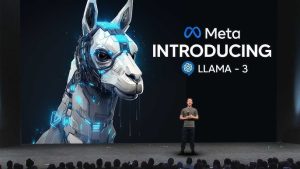Hey, Tech enthusiast! Your Daily Dose of Tech This Thursday is here @DawentsIT …We Inspire To Deliver!
Your Daily Dose Of Technology News – September 11, 2025.
1. Semiconductors, Hardware, and Devices:

– TSMC and Samsung ramp advanced nodes; new tooling announcements.
– What happened: TSMC confirmed volume ramp of 2 nm-class processes with yield improvements; Samsung announced a 1.8 nm pilot plan and new EUV lithography collaborations. ASML flagged continued demand for next-gen EUV systems and upgrades.
– Why it matters: Continued node progress sustains performance/efficiency gains for mobile, data center and AI accelerators; equipment bottlenecks and capital intensity remain an industry constraint.
– NVIDIA updates AI hardware lineup; new DGX/Grace family refresh
– What happened: NVIDIA revealed a refreshed DGX/Grace server and an upgraded H100 successor (sustained improvements in memory bandwidth and interconnect). They also previewed tighter software stacks (CUDA updates) for large-model training efficiency.
– Why it matters: NVIDIA’s hardware roadmap keeps it central to AI training/inference; incremental hardware + software gains reduce cost-per-token for very large models.
– Apple’s September hardware event previews (rumors confirmed)
– What happened: Apple held its Fall product announcement: updated iPhones with new A-series chips optimized for on-device AI, refreshed Apple Watch line, and a new mixed-reality headset SKU with performance and battery life improvements (more focus on AR features than full VR).
– Why it matters: Apple’s emphasis on on-device AI and privacy-centric features sets a consumer trend away from cloud-only models and pressures app developers to adapt.
In Other News:
2. Big Tech Business Moves and Earnings:
– Mixed earnings; generative AI drives capex
– What happened: Major cloud/AI providers reported mixed quarter results: strong cloud revenue growth but rising R&D and capital expenditures for AI infrastructure. Several firms guided higher capex driven by data center and accelerator purchases.
– Why it matters: Heavy capex signals continued industry pivot to AI compute; margins will be affected but vendors are prioritizing long-term capacity.
– Antitrust and corporate reorganizations
– What happened: One major US tech firm announced an internal reorganization to group AI products, platform engineering, and safety under a new “AI Group” led by a senior exec. Separately, regulators in the EU and US moved forward on investigations into cloud/AI market dominance.
– Why it matters: Corporate reorgs reflect strategic prioritization of AI; regulators’ scrutiny could shape future competitive dynamics and licensing/policy for AI models.
3. AI and Machine Learning:

– Meta launches Llama 3 family and new multimodal tools.
– What happened: Meta introduced Llama 3 (several sizes) with improved reasoning, safety filters, and more efficient deployment options for enterprises. They also previewed Meta AI Studio, a low-code platform that combines Llama 3, generative vision, and tools for fine-tuning and safety evaluation.
– Why it matters: Llama 3 tightens Meta’s position in open/enterprise LLM ecosystems; the low-code studio targets companies wanting to build custom multimodal agents without heavy engineering.
– OpenAI releases GPT-5 preview and clarifies safety roadmap
– What happened: OpenAI published a technical preview of GPT-5 capabilities and scaling tests (multimodal, longer context, better math/reasoning) and set a staged release plan emphasizing internal red-teaming, third-party audits, and “safety locks” for high-risk functionality.
– Why it matters: GPT-5’s preview marks the next major step in capability and drives competition; OpenAI’s staged rollout highlights continuing tensions between rapid capability deployment and safety/regulation demands.
– New competitive entrants and funding in AI foundations/models
– What happened: Several startups (some backed by SoftBank and sovereign funds) announced new foundation model projects focused on energy-efficient training, domain-specific LLMs (healthcare, finance), and “trustworthy-by-design” models with on-chain provenance for weights and audit logs.
– Why it matters: Investment and diversity of models increase competition and options for enterprises, and “trust” features reflect market demand for verifiable provenance and compliance.
– Regulatory and standards moves
– What happened: An international standards consortium (led by EU, Japan, and industry players) released draft guidelines for benchmarking AI systems on safety, hallucination rates, and dataset provenance. Expect public comment period.
– Why it matters: Global benchmarking/standards could drive harmonized safety expectations and influence procurement and certification.
4. Space, Mobility, and Climate Tech:
– Space launch cadence picks up; commercial LEO activity increases
– What happened: A commercial launch provider completed a flight that delivered multiple smallsat constellations for IoT and Earth observation. Several companies announced new rideshare contracts and in-orbit servicing demonstrations.
– Why it matters: More affordable launch and rideshare options accelerate deployment of space-based services and commercialized Earth observation.
– EV and autonomous vehicle developments
– What happened: An EV maker unveiled a next-gen battery chemistry (higher energy density) commercial pilot, and an AV company announced expanded robotaxi testing across more U.S. cities after acquiring a mapping startup.
– Why it matters: Battery advances improve range/charging economics; expanded robotaxi tests indicate cautious but steady progress toward commercial autonomous services.
5. Policy, Regulation, and Geopolitics:
– EU advances AI Act implementation; member states consult on enforcement
– What happened: The EU published final guidance on classification of high-risk AI systems and obligations for providers, with transitional timelines. Several member states signaled stronger enforcement allocation.
– Why it matters: The AI Act’s implementation will shape product design, compliance costs, and market access in Europe.
– US tightens export controls on advanced AI chips and ML tools
– What happened: The U.S. extended earlier export-control measures to include select AI accelerators and certain model-training toolchains, citing national security and dual-use concerns. Allies were consulted for coordinated measures.
– Why it matters: Controls limit some international access to leading-edge AI compute and complicate cross-border research and supply chains.
Odds And Ends:
6. Cybersecurity & Privacy:

– Large-scale phishing/credential-stuffing campaign hits financial institutions
– What happened: Security firms detected a coordinated phishing and credential-stuffing operation targeting banks and fintechs in multiple regions, leveraging leaked password dumps and convincing deepfake voice prompts. Several institutions issued alerts; remediation ongoing.
– Why it matters: The attack underscores the danger of reused credentials, the rise of voice deepfakes in fraud, and the need for multi-factor authentication and voice-auth safeguards.
– US and EU issue guidance on AI model security
– What happened: Authorities published recommended practices for securing model weights, access controls for APIs, logging/auditing, and incident response when models are poisoned or exploited.
– Why it matters: Guidance aims to reduce risks like model theft, prompt-injection abuse, and data exfiltration through LLMs.
– Big breach disclosure in healthcare vendor
– What happened: A major healthcare software vendor disclosed a breach affecting medical records for a significant number of patients; investigation points to stolen credentials and inadequate segmentation.
– Why it matters: Healthcare remains a high-value target; the breach will trigger regulatory reporting, class actions, and renewed pushes for zero-trust deployments.
7. Notable Funding, M&A and Startups:
– Several AI and climate tech startups raised new rounds
– What happened: VC activity continues in AI ops, verification/safety tooling, climate-focused materials, and energy-efficiency silicon. A few mid-size firms were acquired by larger tech companies for talent and IP.
– Why it matters: Funding momentum shows investor conviction in AI infrastructure and climate solutions; M&A tailwinds accelerate consolidation of specialized capabilities.
What To Watch Next (near-term):
– Official GPT-5 progressive rollout and third-party audits — impacts to enterprise adoption and regulation.
– EU AI Act enforcement details and how companies adapt compliance programs.
– Supply constraints for advanced lithography and how they influence chip vendor timelines.
– High-profile legal/regulatory actions around data used to train large models (copyright and privacy cases).
– Developments in deepfake detection and defenses as voice and video fakes appear in fraud.
These stories represent the leading developments and trends shaping the technology landscape as of 2025. If you need a summary on any specific topic or more detailed information on emerging tech trends, feel free to ask us @DawentsIT or visit our website at www.dawentsit.com
Follow us for updated news, articles, and videos. Read more on http://www.dawentsit.com/ #Technology #DawentsIT #TechnologyNews #Tech #TSMC #Samsung #ASML #NVIDIA #AppleWatch #AI #AR #VR #AllThingsTechnologyNews #AllThingsTechnologyNewsToday #WeInspireToDeliver
